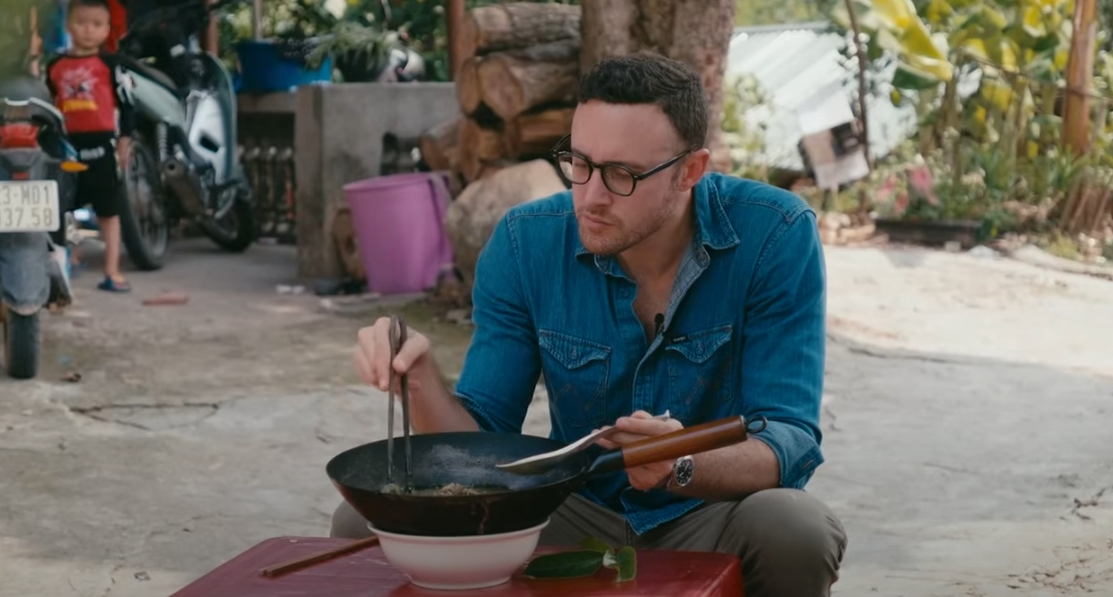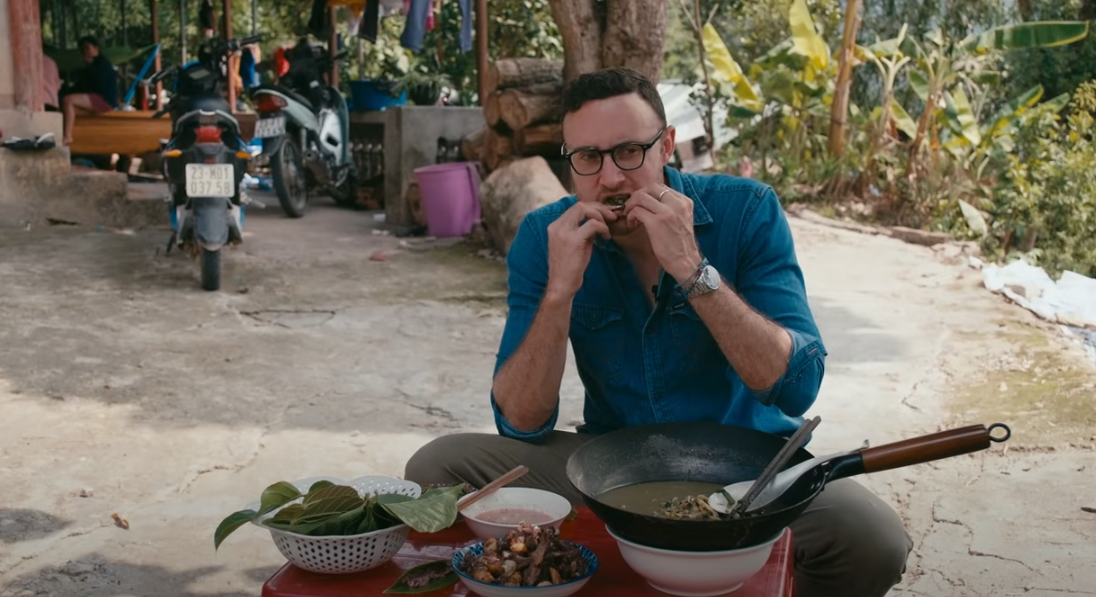Thao Trinh

He tasted each ingredient, sipped the soup, and commented that the dish "has a strong bitter taste, the most difficult to eat in Vietnam."
Andrew Fraser, an Australian YouTuber living and working in Vietnam, has more than 80,000 followers on his YouTube channel, where he shares travel and culinary experiences from various regions in Vietnam. Known for his adventurous palate, Andrew has tried bamboo worms, fried insects, and rat meat, among other unusual dishes.
Most recently, Andrew visited Hoang Su Phi, a district in the west of Ha Giang province, to learn about the cultural life of the Nung ethnic people. Here, he had the opportunity to experience “nam pia” - one of Vietnam's most challenging dishes.
"At first, I came here because I wanted to try ‘nam pia’ of cows, but I couldn't find it. Luckily, a local introduced me to ‘nam pia’ of goats. I was very curious about why this dish is so popular with tourists," Andrew said.
In the Northwest region, ‘nam pia’ is a typical dish of the Thai and Nung ethnic groups, made from the small intestines of herbivorous animals such as buffalo, cows, and goats. The dish's name is derived from the Thai words "nam" (soup) and "pia" (the fluid or small excrement between the stomach and large intestine).
Along with ‘pia’, other internal organs such as the stomach, blood, intestines, heart, and liver are also used. Although ‘nam pia’ is known for its strong, bitter taste and unappealing appearance, those who can eat it often appreciate its unique flavor.
Andrew visited a goat specialty restaurant on a mountainside in Vinh Quang town, where he observed the entire process of making ‘nam pia’ from goats. He was surprised to see that every part of the goat was utilized, leaving nothing to waste.
"The intestines and other internal organs were washed multiple times, squeezed with lemon juice to reduce slime and odor. I noticed there were still young feces inside," he recounted.
After cleaning, the goat's internal organs were cut into small pieces and cooked on the stove with a little water until the young feces dissolved. The mixture was then combined with other ingredients and simmered into a thick, dark yellow soup.
Andrew began his tasting experience with a piece of liver, finding it to have a mild, bitter taste. He then tried the ‘nam pia’ soup itself, which he found extremely challenging due to its strong bitter flavor.
"All the ingredients have a very strong bitter taste because they are mixed in the broth made from young goat feces. The chopped banana flower cooked together also has an indescribable bitter taste. Every time I chew, the bitter taste comes back," he said.
Andrew noted that ‘nam pia’ reminded him of a similar dish he had tried in Mongolia - horse intestine soup. Although the preparation methods are similar, the ingredients in horse intestine soup are usually kept whole, unlike the chopped ingredients in ‘nam pia’.
The YouTuber admitted that the most daunting aspect of ‘nam pia’ is its concept, not just its taste. The fact that it is made from young goat feces and internal organs makes it particularly challenging.
Despite its difficulty, Andrew also enjoyed other goat dishes during his visit, such as raw goat meat wrapped in wild vegetables and goat fried rice. Additionally, he explored the cultural life of the ethnic people in Ha Giang and participated in the local craft of making unique products.



